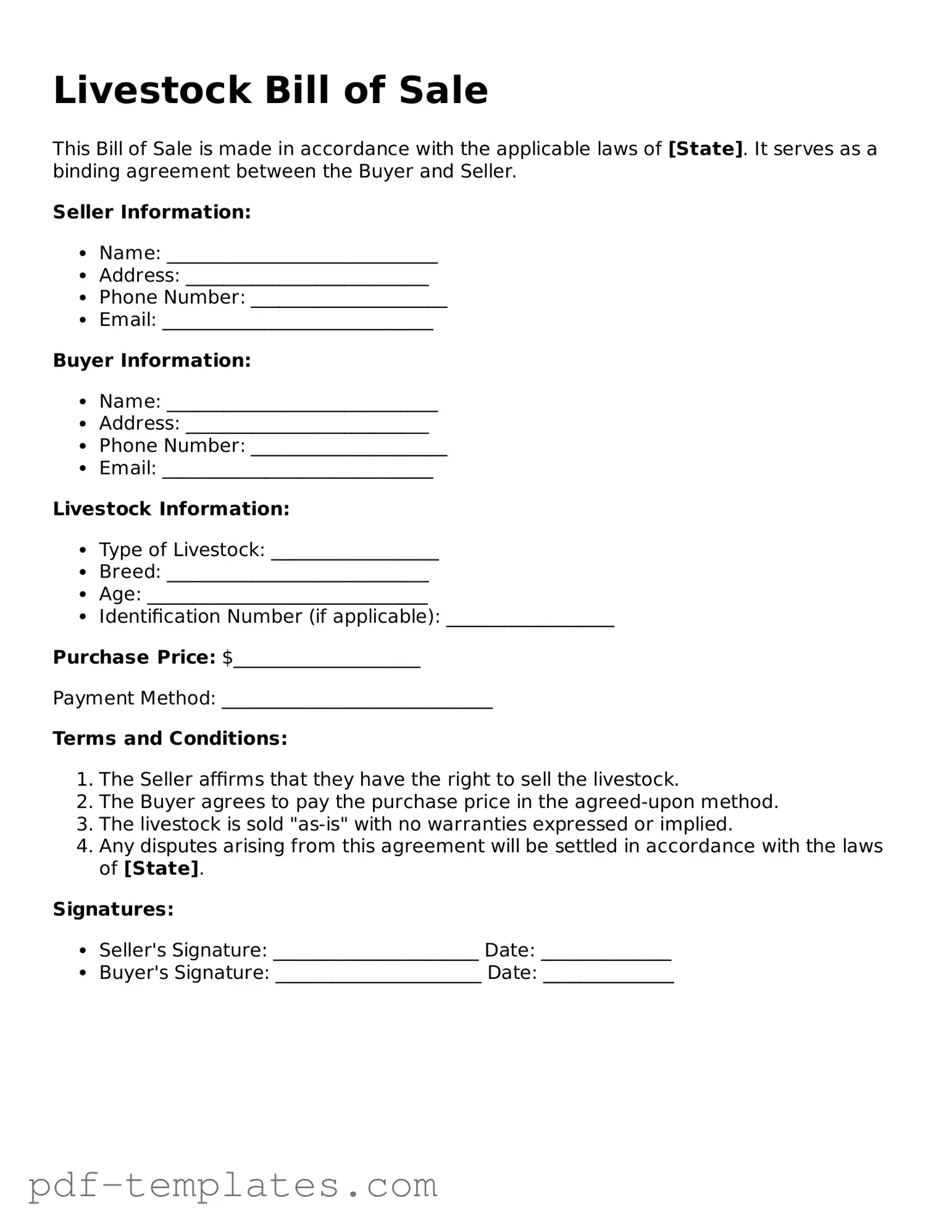The Horse Bill of Sale is a document similar to the Livestock Bill of Sale. It serves as proof of the transfer of ownership for a horse. Like the Livestock Bill of Sale, it includes essential details such as the buyer and seller’s information, a description of the horse, and the sale price. Both documents protect the interests of both parties by providing a legal record of the transaction, ensuring clarity and accountability.
The Vehicle Bill of Sale is another comparable document. This form is used when a motor vehicle changes ownership. Similar to the Livestock Bill of Sale, it contains vital information such as the vehicle identification number (VIN), make, model, and year. Both documents function to validate the sale and transfer of ownership, providing legal protection for the buyer and seller alike.
The Boat Bill of Sale mirrors the Livestock Bill of Sale in its purpose of documenting the sale of a boat. This document includes details about the boat, such as its hull identification number, make, and model. Both forms ensure that the transaction is recorded properly and that the buyer receives clear title to the property, minimizing potential disputes in the future.
The Connecticut ATV Bill of Sale form is crucial for ensuring the proper transfer of ownership of all-terrain vehicles, similar to other sale documents like the Livestock Bill of Sale. Just as these documents secure the terms between buyers and sellers, the Motor Vehicle Bill of Sale also protects the interests of both parties involved in the transaction. Each form is intended to clearly outline the responsibilities and rights, making them essential in various sales processes.
The Equipment Bill of Sale is also similar in function. This document is used for the sale of various types of equipment, from farm machinery to construction tools. Like the Livestock Bill of Sale, it includes descriptions of the equipment, the sale price, and the parties involved. Both documents serve to confirm the transfer of ownership and protect the rights of both the buyer and seller.
The Pet Bill of Sale is another relevant document. It is utilized when transferring ownership of pets, such as dogs or cats. Similar to the Livestock Bill of Sale, it includes details about the pet, such as breed, age, and any health information. Both documents aim to ensure that the new owner has legal ownership and that the previous owner is released from any responsibilities regarding the animal.
The Real Estate Purchase Agreement shares similarities with the Livestock Bill of Sale, although it pertains to real property rather than livestock. This document outlines the terms of a property sale, including the purchase price, property description, and buyer and seller information. Both documents establish a legal framework for the transaction, ensuring that all parties understand their rights and obligations.
The Firearm Bill of Sale is also comparable, as it is used when transferring ownership of a firearm. Like the Livestock Bill of Sale, it includes details about the firearm, such as the make, model, and serial number. Both documents serve to document the transaction and provide a record that protects both the buyer and seller from future liability.
Finally, the Business Bill of Sale is relevant for the sale of a business or its assets. This document outlines the terms of the sale, including the purchase price and details of the business being sold. Similar to the Livestock Bill of Sale, it provides a legal record of the transaction, ensuring that both parties have a clear understanding of the terms and conditions involved in the sale.
